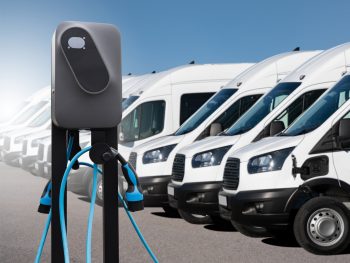Electric vans are showing shorter servicing times compared to internal combustion engine (ICE) and hybrid models, but longer vehicle off-road (VOR) times, according to findings from Epyx.

Its analysis of data from the 1link Service Network service, maintenance and repair (SMR) platform looked at performance across the first four years of vehicle life.
For vehicle servicing times in year one, the figures revealed electric vans averaged 0.74 hours, followed by ICE at 1.05 and hybrid at 1.15.
In year two, it’s electric 0.89 hours, ICE 1.15 and hybrid 1.39. Year three is electric 1.12 hours, ICE at 1.17 and hybrid 1.41.
It’s only in year four that ICE shows the best performance at 1.19 hours, followed by electric at 1.41 and hybrid at 1.42.
Tim Meadows, CCO at Epyx, said: “What we are seeing so far is very much in line with what has long been predicted by SMR experts. There is a strong technical argument that while electric vans are more expensive to buy, their reduced number of wear parts should mean that they spend less time being serviced, and the data is bearing that out in general terms.
“It’s interesting to look at the performance of hybrids, too. Of course, these are vehicles that use two forms of motive power with the added complication that brings, so are potentially going to need more workshop attention, and the figures are bearing this out.”
When it comes to VOR – the time spent between when a vehicle enters and leaves a workshop – year one shows ICE at 1.82 ours, electric at 1.96 and hybrid at 2.14.
In year two, the figures are ICE 2.00 hours, hybrid 2.06 and electric 2.07.
From year three, hybrid shows the best times, with 2.10 hours, ICE 2.21 and electric 2.56.
For year four, it’s hybrid 2.38 hours, ICE 2.63 and electric 2.91.
Epyx said it was important to put some caveats around the data though. While 1link Service Network is used by fleet operators totalling more than five million vehicles to manage their SMR needs, the numbers of electric and hybrids vans on the platform are relatively low.
Meadows also warned that in many respects, the servicing infrastructure behind electric vans is in a relatively early stage of development, while parts supply is often reported to not yet be as good as for ICE and hybrid vehicles.
“That will unavoidably have an effect on VOR times,” he stated.
He added that the rate of change when it comes to the electrification of the fleet market means that this is a very dynamic picture and could change quite quickly.
“We plan to rerun this data in a few months and it will be interesting to see how the picture has developed then.”

